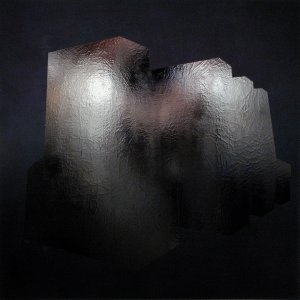Presented By: Center for Armenian Studies
ASP Workshop | Afterlives of Catastrophes: “Western Armenia” in Comparative Perspective
Organizers: Karen Jallatyan, Anoush Suni, 2019-20 Manoogian Postdoctoral Fellows, U-M, and Hakem Al-Rustom, Alex Manoogian Professor of Modern Armenian History, U-M.

For complete workshop details, please see: https://ii.umich.edu/asp/news-events/all-events/workshops/february-2020--afterlives-of-western-armenia.html
As a geography and a concept, Western Armenia is a contested category. The same territory is at once imagined and claimed by disparate yet overlapping groups in often mutually exclusive ways as Western Armenia, Eastern Turkey, and Northern Kurdistan. This geography has been home to many peoples over centuries, including Armenians until the 1915 Catastrophe decimated the Ottoman Armenian community and scattered its survivors across the world, where they founded new homes in the diaspora.
As a result of the rupture of 1915, the Armenian Diaspora came into intimate contact with other communities across the globe. At the same time, on the ancestral lands of the exiled Western Armenians, the material and immaterial remnants of their community live on, animated by the memories and narratives recounted by the muslim Kurds, Turks, and Arabs who continue to live there. Taken together, these constitute two asymmetrically mirroring spaces in which afterlives of Western Armenia continue to develop in dynamic relationships with contemporary political and social processes. What are the afterlives of these histories, communities, and trajectories bound up in the notion of Western Armenia? What are the ongoing effects of the 1915 Genocide of Ottoman Armenians, both in the geography where the mass killing and expropriation took place a century ago and in the diasporic communities where Armenians continue to live today? How are histories of violence and exile inscribed both on the landscape through ruins and in the memories of local communities? And how are they reinterpreted and expressed through literature, art, and language?
Cosponsors: College of Literature, Science, and the Arts; Departments of Anthropology, Comparative Literature, and History; Eisenberg Institute for Historical Studies; Global Islamic Studies Center; Global Theories of Critique; and Institute for the Humanities.
Image: “Cooling Towers,” 2006, oil on canvas, 6’x6’ by Hrayr Anmahouni Eulmessekian. Courtesy of the artist.
If you are a person with a disability who requires an accommodation to attend this event, please reach out to us at least 2 weeks in advance of this event. Please be aware that advance notice is necessary as some accommodations may require more time for the university to arrange.
As a geography and a concept, Western Armenia is a contested category. The same territory is at once imagined and claimed by disparate yet overlapping groups in often mutually exclusive ways as Western Armenia, Eastern Turkey, and Northern Kurdistan. This geography has been home to many peoples over centuries, including Armenians until the 1915 Catastrophe decimated the Ottoman Armenian community and scattered its survivors across the world, where they founded new homes in the diaspora.
As a result of the rupture of 1915, the Armenian Diaspora came into intimate contact with other communities across the globe. At the same time, on the ancestral lands of the exiled Western Armenians, the material and immaterial remnants of their community live on, animated by the memories and narratives recounted by the muslim Kurds, Turks, and Arabs who continue to live there. Taken together, these constitute two asymmetrically mirroring spaces in which afterlives of Western Armenia continue to develop in dynamic relationships with contemporary political and social processes. What are the afterlives of these histories, communities, and trajectories bound up in the notion of Western Armenia? What are the ongoing effects of the 1915 Genocide of Ottoman Armenians, both in the geography where the mass killing and expropriation took place a century ago and in the diasporic communities where Armenians continue to live today? How are histories of violence and exile inscribed both on the landscape through ruins and in the memories of local communities? And how are they reinterpreted and expressed through literature, art, and language?
Cosponsors: College of Literature, Science, and the Arts; Departments of Anthropology, Comparative Literature, and History; Eisenberg Institute for Historical Studies; Global Islamic Studies Center; Global Theories of Critique; and Institute for the Humanities.
Image: “Cooling Towers,” 2006, oil on canvas, 6’x6’ by Hrayr Anmahouni Eulmessekian. Courtesy of the artist.
If you are a person with a disability who requires an accommodation to attend this event, please reach out to us at least 2 weeks in advance of this event. Please be aware that advance notice is necessary as some accommodations may require more time for the university to arrange.